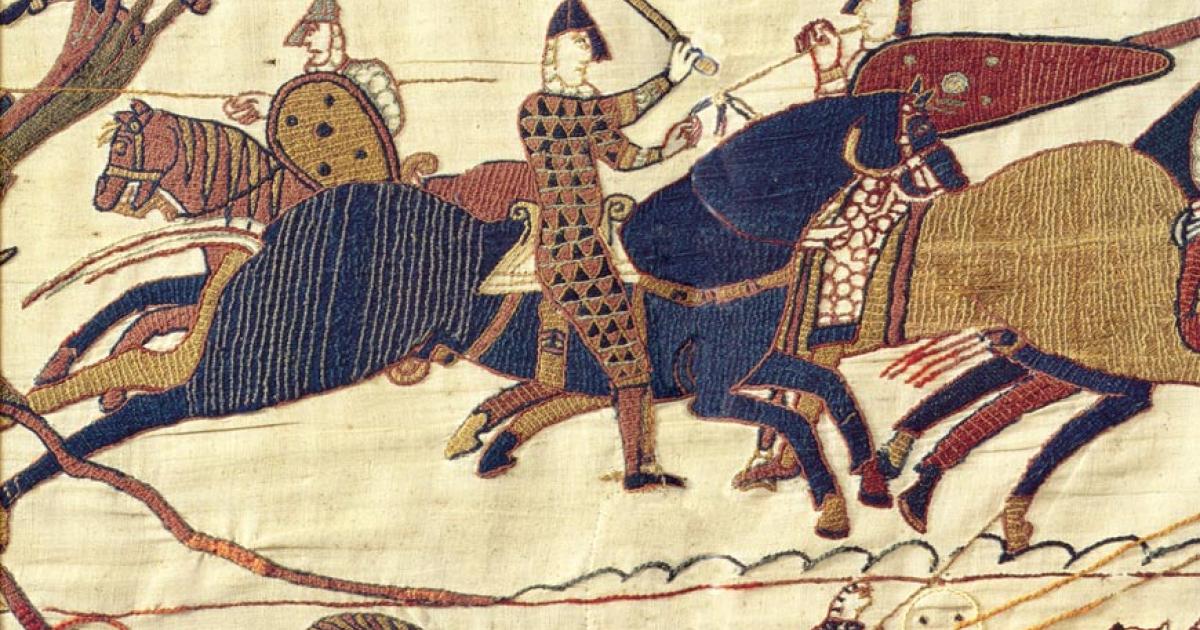The Bayeux Tapestry, a remarkable medieval embroidery, is not just a work of art but a significant historical document, offering a glimpse into 11th-century life and the events surrounding William the Conqueror’s rise to power. Stretching nearly 230 feet in length, the tapestry is an intricate piece of craftsmanship made from linen and decorated with wool threads. Its 58 detailed scenes capture the dramatic story of William’s victory at the Battle of Hastings and the subsequent demise of King Harold, marking a pivotal moment in British history—the Norman conquest of England.
The tapestry is believed to have been commissioned in the 1070s, possibly by Bishop Odo of Bayeux, a half-brother to William, making it a piece of personal and political propaganda. Its earliest known reference was in 1476, when it was listed as part of the Bayeux Cathedral’s inventory in Normandy, France. The tapestry vividly portrays events from 1064 to 1066, starting with Harold’s controversial oath of fealty to William and continuing through the death of King Edward the Confessor. The final chapters of this visual narrative show Harold’s death at Hastings, solidifying William’s claim to the English throne and his emergence as the new ruler of England.
Among the many captivating details of the tapestry, one notable scene includes a depiction of Halley’s Comet, which was observed at the time of Harold’s coronation. Historians interpret this celestial event as a bad omen, hinting at the ill-fated events that would follow. The tapestry concludes with the tragic death of Harold and the subsequent defeat of his forces, though some believe that portions of the tapestry are missing, possibly depicting William’s coronation. Despite some uncertainties around its historical accuracy, the tapestry remains an invaluable source of medieval history.
More than just a visual record of the battle, the Bayeux Tapestry offers a snapshot of medieval society, showing the weapons, clothing, ships, and architecture of the time. Its detailed artwork provides invaluable insights into the culture and technology of the 11th century, making it a key artifact for both historians and art lovers alike. Though its historical accuracy may be debated, the tapestry’s ability to blend history and artistry ensures its place as one of the most significant medieval works still admired today.












